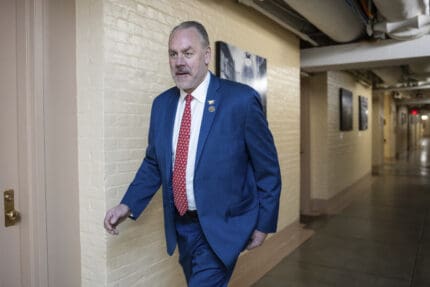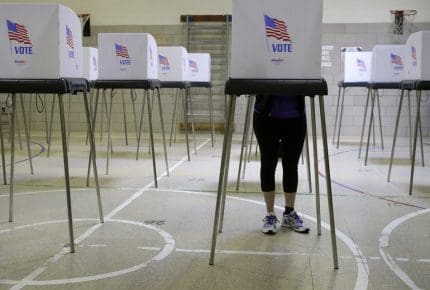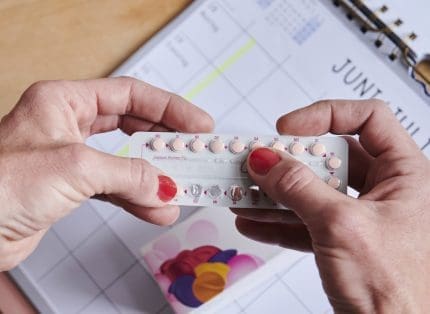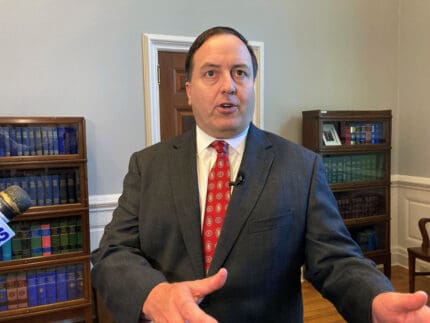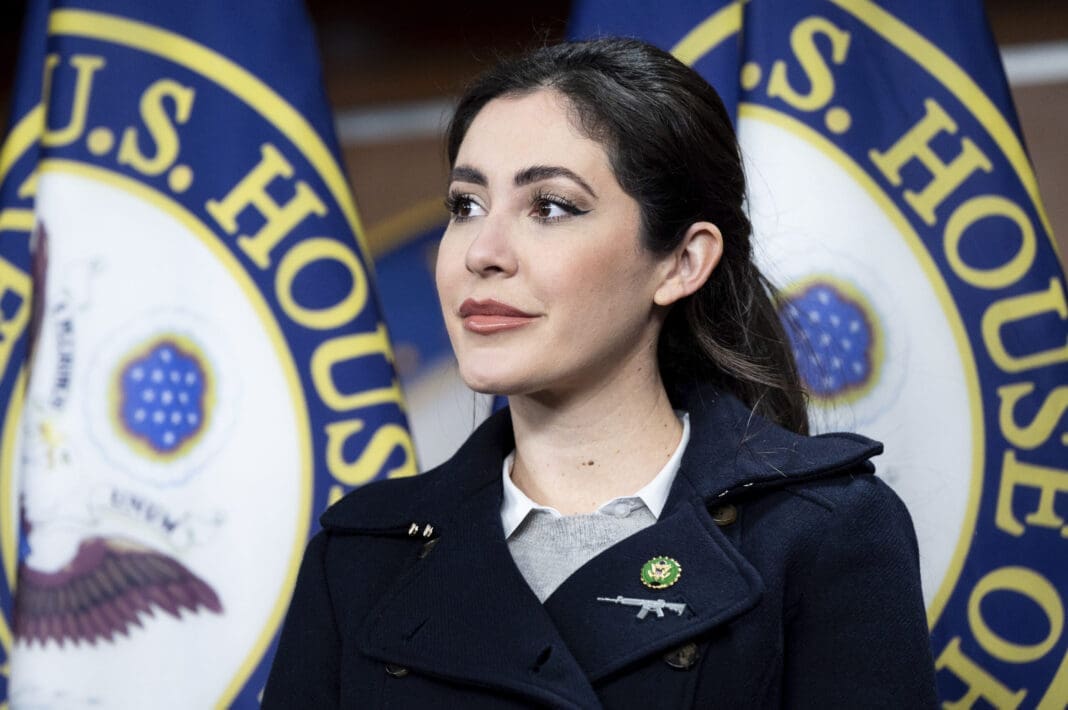Fact check: Republicans spread misleading claims about Biden and 'crack pipes'
Republicans say they want President Joe Biden to rein in fentanyl deaths while criticizing his administration for harm reduction policies that would do just that.

Republicans have spent the past several days promoting a false and misleading claim that President Joe Biden wants to distribute “crack pipes” to people who use drugs. On Wednesday, the White House shot back.
The uproar began Monday after the Washington Free Beacon, a right-wing blog, published a post headlined, “Biden Admin to Fund Crack Pipe Distribution To Advance ‘Racial Equity.'” The misleading story quickly began circulating across the right-wing media ecosphere and was shared by multiple Republican members of Congress.
“If you don’t want your tax dollars to pay for crack pipes to ‘advance racial equity,’ vote Republican,” Sen. Tom Cotton (R-AK) wrote on Twitter. Since Monday, Cotton has tweeted about “crack pipes” and safe injection sites a dozen times.
“I never in my life thought I would have to say this, but the proper role of government is not to fund the distribution of crack pipes. Did Hunter come up with this bullcrap?” Rep. Lauren Boebert (R-CO) tweeted on Tuesday, in an apparent reference to Hunter Biden’s struggles with substance use.
“Government-funded drug paraphernalia is a slap in the face to the communities and first responders fighting against drugs flowing into our country from a wide-open southern border,” Sen. Marsha Blackburn (R-TN) wrote in a letter to Health and Human Services Secretary Xavier Becerra on Tuesday. “If this is the president’s plan to address drug abuse, our nation is in serious trouble.”
Harm reduction is the idea of meeting people who use drugs where they are by providing supplies or services that can make them and their communities healthier.
The Department of Health and Human Services released a statement on Wednesday clarifying that safe smoking kits, part of a whole range of harm reduction services local governments can acquire with funding through the American Rescue Plan, would not include pipes.
“They were never part of the kit,” White House press secretary Jen Psaki said at a briefing on Wednesday. “It was inaccurate reporting, and we wanted to put out information that would make that clear.”
Safe smoking kits will feature alcohol swabs, lip balm, and other materials to reduce the spread of disease, Psaki said. Other supplies groups can procure with the funding include the opioid overdose medication naloxone, sterile syringes, and fentanyl testing strips to ensure drugs haven’t been laced with the opioid.
The Harm Reduction Grant Program “is designed to put these services within reach for Americans who are struggling with substance use so they can stay healthy and safe, avoid overdose death, and find pathways into evidence-based treatments,” a Department of Health and Human Services spokesperson said in a statement provided to the American Independent Foundation.
Nonetheless, conservatives, with the aid of right-wing media, have been riling up fear over the program, which will provide $30 million in grants over three years through the Substance Abuse and Mental Health Services Administration.
A Health and Human Services spokesperson pushed back against right-wing claims about “crack pipe distribution,” calling them “misleading and misinformed.”
The program will allow state and local governments, community nonprofits, and health organizations to access harm reduction resources, as overdose deaths have skyrocketed to more than 100,000 during a 12-month period for the first time, driven in large part by fentanyl, according to the Centers for Disease Control and Prevention.
Republican attacks stem from a fundamental misinterpretation of what harm reduction is, experts say.
“Drug-related harm reduction is the idea that we should keep people as safe as possible, without insisting that they cease their drug use,” Joanne Csete, a Columbia University professor who studies health services for people who use drugs, told the American Independent Foundation.
“People are not always ready to be able to be abstinent, and while they can’t be, we really have a responsibility to try to help them do what they can to keep themselves alive and as healthy as possible,” Csete added.
That means providing people who use drugs with sterile needles, for example, to prevent them from getting skin infections and abscesses or contracting infections like HIV or Hepatitis C. Once people receive safe supplies in a stigma-free zone, they can receive other services like health screenings, wound care, and connection to a medical professional.
A common misconception is that harm reduction introduces people to drug use or encourages them to keep coming back for more.
“Harm reduction does not facilitate drug use; there’s no evidence that providing the means for people to keep themselves safer results in the initiation of drug use or in incidence of new drug use, and has been looked at 1,000 times with respect to things like needle exchange,” Csete said.
But because “drugs are so demonized and people who use them are so demonized,” it makes it very difficult to have that “science-based pragmatic policy discussion,” Csete said.
Harm reduction programs, in fact, do the exact opposite of encouraging or facilitating drug use: They introduce people to all sorts of care, which can include housing support, mental health support, substance use disorder treatment support, and more, according to Caitlin O’Neill, co-director of the New Jersey Harm Reduction Coalition.
“I speak from experience, from a person who used a syringe service program during my injection drug use,” O’Neill told the American Independent Foundation. “What it is is it’s meeting a need that was already there. I didn’t start injecting when I knew there was a syringe service program, I was injecting long before that and in very harmful ways — sharing syringes, reusing syringes, getting abscesses, skin infections, not really even knowing about things that I needed to do for my health.”
“So what happens when you enter harm reduction programs is maybe you show up for the syringes, and then you realize there’s a huge continuum of care,” O’Neill added.
O’Neill said they encountered “judgment and eye rolls from the staff” when they tried to seek care in a traditional medical setting for a skin abscess, and compared that to the stigma-free care they received at a harm reduction center.
Drug-related harm reduction programs do currently exist in America, largely in the form of syringe exchanges, which popped up in the late 1980s, enabling people to turn in their old needles for new sterile ones. These programs, which number around 200 according to a tally in 2017, have demonstrably reduced HIV transmission, while also addressing additional health and social needs, researchers say.
Harm reduction programs, including supervised injection sites, are much more widespread in Europe, where there are far fewer drug overdoses than in the United States.
While Republicans criticize Biden for his administration’s harm reduction efforts, they’ve also attacked him for not doing more to curb the spread of fentanyl, as the American Independent Foundation reported on Monday.
“You would think that in the middle of an overdose crisis, you’re going to do everything possible to pull out the stops to be sure that people have access to the health services that they need that might contribute to reducing overdose mortality as well as infectious disease, and yet, we can’t get past this idea of harm reduction as somehow endorsing drug use, which is just very unfortunate,” Csete said.
Published with permission of The American Independent Foundation.
Recommended

Biden campaign launches new ad focused on Affordable Care Act
Former President Trump has said he wants to do away with the popular health care law.
By Kim Lyons, Pennsylvania Capital-Star - May 08, 2024
Ohio doctors fear effects of emergency abortion care case set to go before U.S. Supreme Court
A federal law that allows emergency departments to treat patients without regard to their ability to pay will be under U.S. Supreme Court scrutiny this week, and Ohio doctors are concerned about the case’s local impact on emergency abortion care.
By Susan Tebben, Ohio Capital Journal - April 23, 2024
House GOP votes to end flu, whooping cough vaccine rules for foster and adoptive families
A bill to eliminate flu and whooping cough vaccine requirements for adoptive and foster families caring for babies and medically fragile kids is heading to the governor’s desk.
By Anita Wadhwani, Tennessee Lookout - March 26, 2024

















